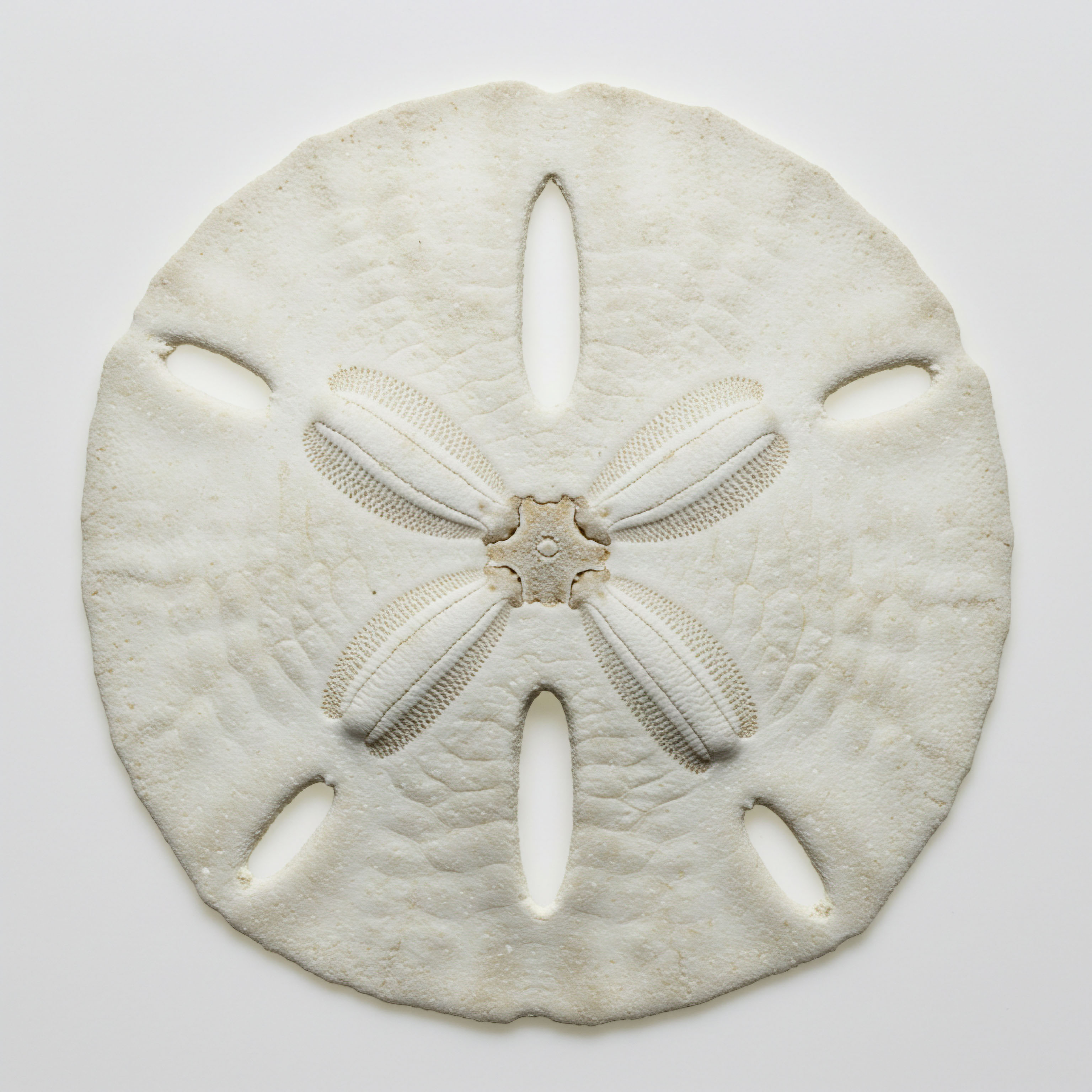

Fundamentals
That feeling of a racing heart, a sudden sense of unease, or the persistent fatigue that clouds your day ∞ these are not just abstract experiences. They are physical signals, messages from deep within your body’s intricate communication network. When we discuss heart health, we often focus on diet and exercise, which are undeniably important.
Yet, there’s a more fundamental system at play, a silent conductor orchestrating the rhythm and resilience of your cardiovascular system. This is the world of your endocrine system, the collection of glands that produces the hormones governing everything from your energy levels to your stress response.
Understanding how this internal messaging service connects to your heart is the first step toward reclaiming a sense of control over your own biology. It is about recognizing that symptoms are data, and your lived experience is a critical part of the diagnostic puzzle. The connection between your hormones and your heart is personal and profound, a biological reality that shapes how you feel and function every moment of every day.
The endocrine system acts as a master regulator, and its influence on cardiovascular wellness is a foundational aspect of human physiology.

The Body’s Internal Messaging Service
Your endocrine system is a network of glands ∞ like the thyroid, adrenals, and gonads ∞ that synthesize and release hormones directly into the bloodstream. These chemical messengers travel throughout your body, binding to specific receptors on target cells to initiate a cascade of biological responses. Think of it as a highly sophisticated postal service.
A gland (the post office) sends a letter (a hormone) through the bloodstream (the mail route) to a specific house (a cell receptor), where it delivers a precise instruction.
This system is responsible for regulating a vast array of processes, including growth, metabolism, mood, and, critically, cardiovascular function. Hormones influence your heart rate, the force of its contractions, blood pressure, and even the health of your blood vessels. When this communication network is functioning optimally, your cardiovascular system operates in a state of dynamic equilibrium.
When the signals become distorted ∞ too much of one hormone, too little of another ∞ the entire system can be affected, leading to tangible symptoms and long-term health consequences.

Key Hormonal Players in Cardiac Function
Several hormones have a particularly direct and significant impact on the heart. Understanding their roles provides a clearer picture of how endocrine health and cardiovascular vitality are intertwined.
- Thyroid Hormones (T3 and T4) These hormones, produced by the thyroid gland, are the primary regulators of your body’s metabolic rate. They directly affect heart rate and the strength of each heartbeat. An overactive thyroid (hyperthyroidism) can lead to a rapid, irregular heartbeat, while an underactive thyroid (hypothyroidism) can cause a slower heart rate and less efficient cardiac function.
- Cortisol Produced by the adrenal glands in response to stress, cortisol plays a vital role in the “fight or flight” response. It increases blood pressure and heart rate to prepare the body for action. Chronic elevation of cortisol, however, can lead to sustained high blood pressure and inflammation, both of which are significant risk factors for heart disease.
- Sex Hormones (Estrogen and Testosterone) These hormones have complex and powerful effects on the cardiovascular system. Estrogen, in premenopausal women, is known to have a protective effect, helping to maintain healthy cholesterol levels and promoting the flexibility of blood vessels. Testosterone also plays a role in cardiovascular health, with low levels in men being associated with an increased risk of heart disease.
The intricate balance of these and other hormones is what maintains cardiovascular homeostasis. A disruption in one part of the system can create a ripple effect, impacting the function of the entire network. This is why a systems-based approach, one that looks at the body as an interconnected whole, is so essential for understanding and addressing the root causes of cardiovascular issues.


Intermediate
Moving beyond the foundational understanding of which hormones affect the heart, we can now examine the precise mechanisms through which these connections operate. The relationship between the endocrine and cardiovascular systems is a dynamic interplay of feedback loops and signaling pathways. When we experience symptoms, it is often because one of these pathways has become dysregulated.
Understanding these clinical mechanics allows us to appreciate how targeted interventions, such as hormonal optimization protocols, can work to restore balance and improve cardiovascular outcomes.
This level of analysis requires us to think like clinical translators, connecting the subjective experience of symptoms to the objective data of lab results and the specific actions of therapeutic protocols. It is about understanding the “how” and “why” behind both the problem and the solution, empowering you with the knowledge to engage in informed discussions about your own health journey.
Hormonal imbalances contribute to cardiovascular disease by directly altering cardiac function and vascular health.

The Thyroid-Cardiac Axis a Master Regulator of Metabolism
The thyroid gland’s influence on the heart is one of the most direct and well-understood connections in cardiovascular endocrinology. The two primary thyroid hormones, thyroxine (T4) and triiodothyronine (T3), act on nearly every cell in the body, but their effects on cardiomyocytes (heart muscle cells) and the vascular system are particularly profound.
T3, the more biologically active form of the hormone, enters cardiac cells and binds to nuclear receptors, directly influencing the transcription of genes that control cardiac contractility and rhythm.
An excess of thyroid hormone, a condition known as hyperthyroidism, accelerates cardiovascular function. It increases resting heart rate, enhances the force of cardiac contractions, and can lead to arrhythmias like atrial fibrillation. Conversely, hypothyroidism, or a deficiency of thyroid hormone, slows everything down.
It is associated with a reduced heart rate, decreased cardiac output, and an increase in systemic vascular resistance, which can elevate diastolic blood pressure. These conditions illustrate the critical importance of maintaining thyroid hormones within a narrow, optimal range for cardiovascular health.

Clinical Protocols for Thyroid Optimization
When lab results indicate a thyroid imbalance, the clinical goal is to restore euthyroidism ∞ a state of normal thyroid function. For hypothyroidism, the standard protocol involves replacement with synthetic T4 (levothyroxine). The body then converts T4 to the active T3, restoring normal hormonal signaling.
In some cases, a combination of T4 and T3 may be used. The precise dosing is guided by regular monitoring of Thyroid-Stimulating Hormone (TSH) and free T4 levels, ensuring that the cardiovascular system is not overstimulated.
For hyperthyroidism, treatment options include anti-thyroid medications that block hormone production, radioactive iodine to ablate the thyroid gland, or surgical removal. Each of these approaches aims to reduce the amount of circulating thyroid hormone, thereby alleviating the strain on the cardiovascular system and restoring a normal heart rate and rhythm.

The Role of Sex Hormones in Vascular Health
The influence of estrogen and testosterone on the cardiovascular system extends far beyond their reproductive functions. These hormones play a crucial role in maintaining the health and integrity of blood vessels, a process central to preventing atherosclerosis and other forms of heart disease.
Estrogen has several vasoprotective effects. It stimulates the production of nitric oxide, a potent vasodilator that helps to relax and widen blood vessels, improving blood flow and reducing blood pressure. It also has favorable effects on lipid profiles, tending to increase HDL (“good”) cholesterol and decrease LDL (“bad”) cholesterol. The decline in estrogen during menopause is associated with a corresponding increase in cardiovascular risk factors, highlighting the hormone’s protective role.
Testosterone’s role is more complex, but it is increasingly recognized as a key factor in male cardiovascular health. Low testosterone levels in men are consistently associated with an increased prevalence of coronary artery disease, metabolic syndrome, and type 2 diabetes.
Testosterone replacement therapy (TRT) in men with documented hypogonadism has been shown to improve many of these risk factors, including insulin sensitivity and lipid profiles. However, the use of supraphysiological doses of testosterone, particularly in the context of anabolic steroid abuse, can have detrimental effects, including adverse changes in cholesterol and an increased risk of blood clots.

Hormonal Optimization Protocols for Men and Women
For women experiencing perimenopause or menopause, hormone replacement therapy (HRT) with estrogen, often combined with progesterone, can alleviate symptoms and may offer cardiovascular benefits, particularly when initiated early in the menopausal transition. The route of administration is important; transdermal estrogen, for example, appears to have a more favorable risk profile than oral estrogen.
For men with clinically diagnosed low testosterone, TRT aims to restore physiological hormone levels. A common protocol involves weekly injections of testosterone cypionate, often combined with medications like anastrozole to control estrogen conversion and gonadorelin to maintain testicular function. Careful monitoring of blood levels and clinical response is essential to ensure both efficacy and safety.
The following table outlines the general cardiovascular effects of key hormones:
| Hormone | Primary Cardiovascular Effects | Effect of Deficiency | Effect of Excess |
|---|---|---|---|
| Thyroid Hormone (T3/T4) | Regulates heart rate, contractility, and metabolism | Slow heart rate, reduced cardiac output, increased cholesterol | Rapid heart rate, arrhythmias, increased contractility |
| Estrogen | Promotes vasodilation, improves lipid profiles | Increased risk of atherosclerosis, hypertension | Increased risk of blood clots (with some formulations) |
| Testosterone | Supports lean muscle mass, insulin sensitivity | Increased visceral fat, insulin resistance, higher CAD risk | Adverse lipid changes, potential for thrombosis (supraphysiological doses) |
| Cortisol | Increases heart rate and blood pressure (acute stress) | Hypotension, fatigue (in adrenal insufficiency) | Hypertension, inflammation, central obesity (chronic elevation) |


Academic
An academic exploration of the interconnection between the endocrine and cardiovascular systems necessitates a move into the realm of molecular biology and systems physiology. Here, we dissect the intricate signaling cascades, genomic and non-genomic hormonal actions, and the complex feedback loops that govern this relationship.
This deep dive focuses on the Hypothalamic-Pituitary-Adrenal (HPA) axis and the Hypothalamic-Pituitary-Gonadal (HPG) axis, viewing them not as isolated pathways, but as integrated networks that converge to regulate cardiovascular homeostasis. Understanding these systems at a granular level reveals why hormonal dysregulation is a potent driver of cardiovascular pathology and how precisely targeted therapeutic interventions can restore physiological balance.

The HPA Axis and Cardiovascular Stress Response
The HPA axis is the body’s central stress response system. When faced with a stressor, the hypothalamus releases corticotropin-releasing hormone (CRH), which signals the pituitary gland to secrete adrenocorticotropic hormone (ACTH). ACTH then travels to the adrenal glands and stimulates the release of cortisol.
This cascade has profound and immediate effects on the cardiovascular system. Cortisol potentiates the effects of catecholamines (epinephrine and norepinephrine), leading to increased heart rate, enhanced cardiac contractility, and peripheral vasoconstriction, all of which elevate blood pressure. This is a highly adaptive short-term survival mechanism.
Chronic activation of the HPA axis, however, becomes maladaptive. Sustained high levels of cortisol contribute to the development of visceral obesity, insulin resistance, and dyslipidemia ∞ a cluster of conditions known as metabolic syndrome, which is a major risk factor for cardiovascular disease.
Furthermore, cortisol has direct effects on the vasculature, promoting endothelial dysfunction and contributing to the development of atherosclerotic plaques. From a clinical perspective, assessing HPA axis function through measurements of salivary or urinary cortisol can provide valuable insights into a patient’s chronic stress burden and its potential impact on their cardiovascular health.

The HPG Axis and Sex-Specific Cardiovascular Effects
The HPG axis governs the production of sex hormones. In men, the hypothalamus releases gonadotropin-releasing hormone (GnRH), which stimulates the pituitary to release luteinizing hormone (LH) and follicle-stimulating hormone (FSH). LH, in turn, signals the testes to produce testosterone. In women, the HPG axis orchestrates the menstrual cycle, with fluctuating levels of estrogen and progesterone. The cardiovascular implications of this axis are significant and sex-specific.
In men, testosterone’s influence on cardiovascular health is multifaceted. It has generally favorable effects on body composition, promoting lean muscle mass over fat mass, and it enhances insulin sensitivity. Low testosterone is strongly correlated with an increased risk of coronary artery disease.
Testosterone replacement therapy in hypogonadal men can improve these metabolic parameters and has been shown in some studies to improve myocardial ischemia. The mechanism appears to involve both genomic effects on protein synthesis and non-genomic effects, such as direct vasodilation of coronary arteries.
In women, estrogen’s cardioprotective effects are well-documented. Estrogen receptors are present on both vascular endothelial cells and smooth muscle cells. Activation of these receptors leads to increased production of nitric oxide and prostacyclin, two potent vasodilators. Estrogen also modulates the renin-angiotensin-aldosterone system (RAAS), a key regulator of blood pressure. The loss of these protective mechanisms after menopause contributes significantly to the increased incidence of hypertension and cardiovascular disease in postmenopausal women.

What Are the Implications for Therapeutic Interventions?
A systems-biology perspective on the HPA and HPG axes informs a more sophisticated approach to therapeutic interventions. For example, in a man presenting with symptoms of low testosterone and cardiovascular risk factors, simply replacing testosterone may not be sufficient.
A comprehensive evaluation should also assess HPA axis function, as chronic stress and elevated cortisol can suppress the HPG axis. In such cases, a protocol that combines testosterone replacement with stress management techniques and potentially adaptogenic support could yield superior results.
Similarly, for a postmenopausal woman, hormone replacement therapy is not a one-size-fits-all solution. The timing of initiation, the specific formulation and route of administration of estrogen and progesterone, and the individual’s underlying cardiovascular risk profile must all be considered. The goal is to replicate the physiological balance of the premenopausal state as closely as possible, thereby restoring the cardiovascular benefits of hormonal homeostasis.
The following table details the specific mechanisms of action for key hormones on the cardiovascular system:
| Hormone/System | Mechanism of Action | Cardiovascular Consequence |
|---|---|---|
| Thyroid Hormone (T3) | Binds to nuclear receptors in cardiomyocytes, upregulating genes for contractile proteins (e.g. alpha-myosin heavy chain) and downregulating inhibitors (e.g. phospholamban). | Increased cardiac contractility and heart rate. |
| Estrogen (E2) | Activates endothelial nitric oxide synthase (eNOS) via estrogen receptor alpha (ERα), leading to increased nitric oxide production. Modulates lipid metabolism in the liver. | Vasodilation, improved blood flow, favorable lipid profile. |
| Testosterone | Promotes differentiation of mesenchymal stem cells into muscle rather than fat. Improves insulin signaling pathways. May have direct vasodilatory effects on coronary arteries. | Improved body composition, enhanced insulin sensitivity, potential for improved myocardial perfusion. |
| Cortisol (chronic excess) | Induces insulin resistance in peripheral tissues. Promotes visceral fat accumulation. Upregulates angiotensinogen, a precursor in the RAAS. | Hypertension, dyslipidemia, hyperglycemia, pro-inflammatory state. |
| Aldosterone | Acts on mineralocorticoid receptors in the kidneys to promote sodium and water retention. Also acts on receptors in the heart and blood vessels, promoting fibrosis and inflammation. | Increased blood volume and pressure, cardiac and vascular fibrosis. |

References
- Fountoulakis, S. & Tsatsoulis, A. (2006). The Endocrine System and the Heart ∞ A Review. Revista Española de Cardiología (English Edition), 59(9), 922-931.
- S. K. Gupta, A. K. Singh, P. Kumar and S. Singh, “The Heart of the Matter ∞ Cardiac Manifestations of Endocrine Disease,” Journal of the Association of Physicians of India, vol. 65, no. 8, pp. 64-69, 2017.
- Baxter, J. D. Young, W. F. & Wehling, M. (2003). Cardiovascular Endocrinology ∞ Introduction. Endocrine Reviews, 24(2), 131-134.
- Sowers, J. R. Whaley-Connell, A. & Epstein, M. (2009). The endocrine and cardiovascular systems ∞ a close liaison. The American journal of medicine, 122(5 Suppl), S1-S2.
- Giammanco, M. Di-Majo, D. La-Guardia, M. & Giammanco, S. (2009). Influence of sex hormones and phytoestrogens on heart disease in men and women. Panminerva medica, 51(3), 147-161.
- Jabbar, A. Pingitore, A. Pearce, S. H. Wiersinga, W. M. & Razvi, S. (2017). Thyroid hormones and cardiovascular disease. Nature Reviews Cardiology, 14(3), 174-188.
- Zhang, Y. Ouyang, P. & Post, W. S. (2011). The effect of testosterone on cardiovascular disease and cardiovascular risk factors in men ∞ a review of clinical and preclinical data. Journal of the American Heart Association, 1(1), e000243.
- Iorga, A. Cunningham, C. M. Moazeni, S. Ruffenach, G. & Iorga, S. (2017). The protective role of estrogen and estrogen receptors in cardiovascular disease and the controversial use of estrogen therapy. Biology of sex differences, 8(1), 33.

Reflection

Charting Your Own Biological Course
The information presented here offers a map of the intricate biological landscape that connects your endocrine system to your heart. It provides a framework for understanding the profound ways in which your internal chemistry shapes your physical reality. This knowledge is a powerful tool, one that transforms you from a passive passenger to an active navigator of your own health journey.
The path forward involves a partnership ∞ a collaborative effort between your lived experience and the objective insights of clinical science. What are the subtle signals your body has been sending? How might they correlate with the systems we have discussed?
This process of introspection, of connecting your personal narrative to these biological principles, is the first and most crucial step toward personalized wellness. It is the beginning of a dialogue with your own body, one that can lead to a deeper understanding and a more vibrant, resilient state of being.



